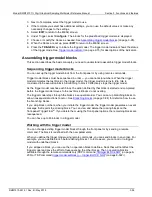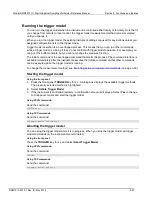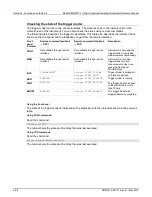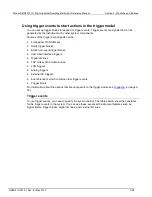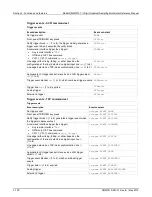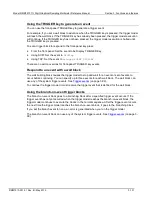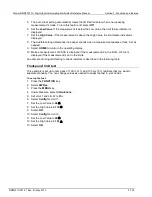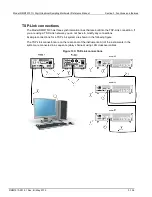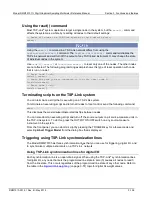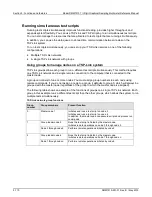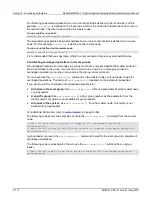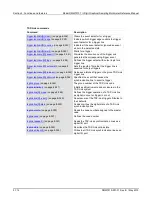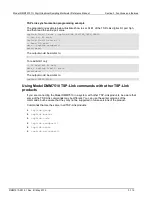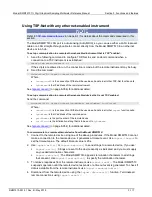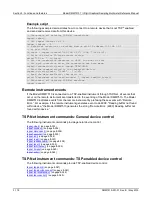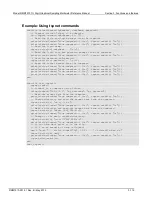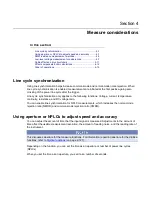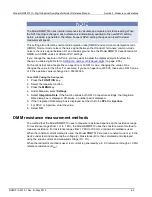
Model DMM7510 7½ Digit Graphical Sampling Multimeter Reference Manual
Section 3: Functions and features
DMM7510-901-01 Rev. B / May 2015
3-109
Using the reset() command
Most TSP-Link
®
system operations target a single node in the system, but the
reset()
command
affects the system as a whole by resetting all nodes to their default settings:
-- Reset all nodes in a TSP-Link system to their default state.
reset()
Using the
reset()
command in a TSP-Link network differs from using the
tsplink.initialize()
command. The
tsplink.initialize()
command reinitializes the
TSP-Link network and will turn off the output of any TSP-linked instrument. It may change the state
of individual nodes in the system.
Use
node[
N
].reset()
or
localnode.reset()
to reset only one of the nodes. The other nodes
are not affected. The following programming example shows this type of reset operation with code
that is run on node 1.
-- Reset node 1 only.
node[1].reset()
-- Reset the node you are connected to (in this case, node 1).
localnode.reset()
-- Reset node 4 only.
node[4].reset()
Terminating scripts on the TSP-Link system
You can terminate a script that is executing on a TSP-Link system.
To terminate an executing script and return all nodes to local control, send the following command:
abort
This dissolves the master/subordinate relationships between nodes.
You can also abort an executing script and turn off the source outputs on all source-measure units in
the TSP-Link system. To do this, press the OUTPUT ON/OFF switch on any source-measure
instrument in the system.
From the front panel, you can abort a script by pressing the TRIGGER key for a few seconds and
selecting
Abort Trigger Model
from the dialog box that is displayed.
Triggering using TSP-Link synchronization lines
The Model DMM7510 has three synchronization lines that you can use for triggering, digital I/O, and
to synchronize multiple instruments on a TSP-Link
®
network.
Using TSP-Link synchronization lines for digital I/O
Each synchronization line is an open-drain signal. When using the TSP-Link
®
synchronization lines
for digital I/O, any node that sets the programmed line state to zero (0) causes all nodes to read 0
from the line state. This occurs regardless of the programmed line state of any other node. Refer to
the table in the
(on page 3-57) topic for digital bit weight values.

